This blog is a collection of hypotheticals all surrounding the concept of Pokemon being implemented into our world, workshopped by a few friends. Asks are open, call me Professor Hemlock! (they/them)
Don't wanna be here? Send us removal request.
Text
Hey! This is my main blog! If you’re interested, here’s a link to my Fiverr to commission me. Otherwise, this should be the last time I post about this lol
Shameless Promo
Hey! I don’t think anyone pays attention to this blog, but if anyone’s interested…
https://www.fiverr.com/share/QdQrVe
https://www.fiverr.com/share/a0w7qQ
I’m doing commissions now! I’ve only been going for a few weeks, but if you’re curious, here’s some of my art. I have cheap prices too, if that’s a bonus for you!

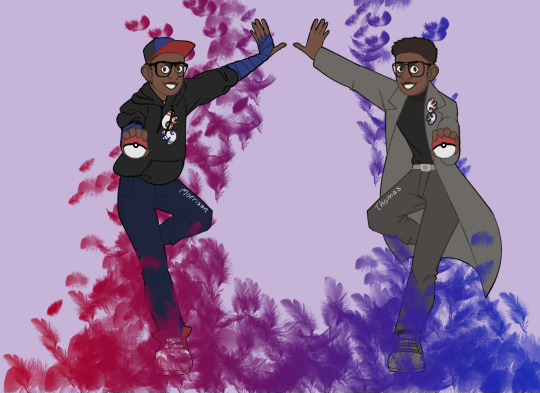



10 notes
·
View notes
Text
Twin Cities Gym
Pre-Text: Hey! I’m now running a PTU campaign to try out my ideas that I’ve been posting on this blog, so I thought I’d document some of the stuff I’ve created for the campaign. Mainly, the gyms for now! So, here’s what I’ve created for the first gym I made, the Twin Cities gym. These are the gym leaders of the Minnesota gym circuit.
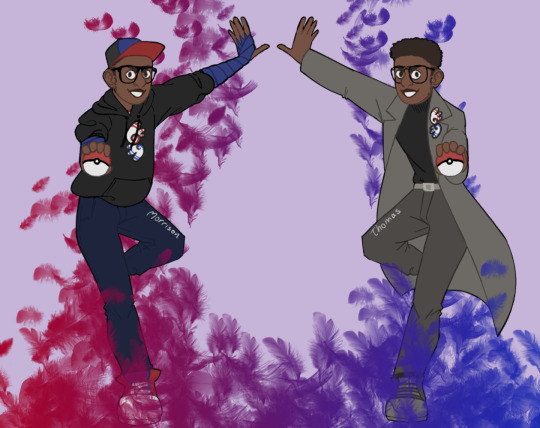
Type/Battle Style: Flying-type Gym, Double Battle System
The Leaders: Morrison and Thomas Skye, twin gym leaders who specialize in double battles. These leaders are on the younger side, but have still worked as the gym leaders of the Twin Cities gym for eight years now. Morrison is the energetic, outgoing, driven, half of the pair while Thomas is the patient, studious, and more analytical of the two. Together, they make quite the formidable team. Morrison is also a part-time entrepreneur, and Thomas is a researcher and breeder.
The Gym: A skyscraper that sits right between St. Paul and Minneapolis, this gym is a clash between the historic and the creative. The gym is styled like a capitol building with marble and gold leaf, but with large cracks throughout. In those cracks are glass, modern windows that display more of the interior. The gym has four functions: office space, archives, gym, and roost. The entire building has spaces throughout that are rented out to businesses. On the first floors are the gym and bleachers. The whole building is hollow with an open roof, and stairs wrap around the interior throughout. That way, non-airborne Pokemon can still scale the building during battle. Along this cylindrical battle area are also viewing decks from which on-lookers can watch the battles. The gym also has a small museum as well as some historical archives. At the very top of the gym is an open roost. Bird Pokemon can fly in and out of the roosts at the very top, and its there that Morrison can spend his time taking care of the Pokemon and studying their nesting behaviors. All in all, this gym is one of multiple functions.
Gym Challenge: To challenge the gym, trainers must first pass a Twin Cities knowledge test on both the current conditions of the cities, as well as its past.
Teams:
Thomas: Swablu, Pidgeotto
Morrison: Noibat, Corvisquire
Rewards: This gym is known for giving an egg as a reward for defeating this gym in addition to a Twin Badge. (Badge being the two white wings that are on Morrison’s sweatshirt and Thomas’s pin.)

#a prof hemlock dissertation#pokemon#pokemon au#pokemon headcanon#what if pokemon were real#pokemon worldbuilding#pokemon irl#pokemon in real life#pokemon gym#pokemon gym challenge#gym leader#a prof hemlock illustration#minnesota#twin cities#Minneapolis#st paul
27 notes
·
View notes
Photo

man, when the hyperfixations hit, they hit HARD.
#rb#thought it would be nice to put this here as well :)#considering the concept of if pokemon were real#definitely would have had a hoothoot as a starter pokemon#i absolutely adored the guardians of ga'hoole as a kid#and as a pjo fan?#definitely would have named it athena#because i'm basic#the prof speaks
24 notes
·
View notes
Text
Hello!
I’d like to first acknowledge the break I’ve had in updates. Previously, I was updating every week or so on this blog with new essays. It’s been nearly a year now since my last essay, but I’m still an avid fan of this concept, and I never plan on deleting this blog because it serves as a good archive. I would absolutely love to return this blog soon, and hopefully with the end of my semester approaching within weeks, I will have found the time to do so! When I come back, I plan on continuing with topics such as Pokemon in Sports, Pokemon in Education, and Pokemon in Politics. What would high school Pokemon sports look like? How would the education system change to fit a Pokemon-inclusive economy? Can I have a Metagross in my dorm? Would Bernie Sanders be in favor of potion and Pokeball taxation? Should the Pokemon Center system be private or public? I still have a lot to say!
In summary, I haven’t posted in a longtime, but I hope to soon. Thank you to everyone who’s been interacting with this blog in the meantime.
Much love, Professor Hemlock
3 notes
·
View notes
Text
Gym Circuits

Let’s get into one of my favorite aspects of Pokemon: Pokemon Gyms and Gym Challenges. A cornerstone of the franchise, most of the media has been centered around trainers aiming to complete the gym challenge to eventually become champion, either by competing in a tournament style such as with the anime and the Galar region, or by challenging the Elite Four. If we were to transpose a gym challenge system into the real world, here’s how I think it would run–at least in the United States.First, I would begin by dividing gyms into two categories: county gyms and state gyms. Both would have functioning gym leaders, but their styles and their purposes would differ immensely. We divided the two types up because gyms seem to serve two very different purposes–either for challengers to defeat the leader, or to serve as areas for trainers to train with their Pokemon. By dividing those two purposes, each type of gym can specialize in their objectives.
Beginning with county gyms, each county would have a number of gyms determined by this equation: ([x/1000]+[y/50,000]=z). “X” represents the total area of the county in square miles, “Y” represents the total population of the county, and “Z” would then be the total number of gyms available in that county, rounding to the nearest whole number. For my relatively small-medium county, I’d be left with three. This equation is split between balancing both size and population because if a county has more people, it will need more gyms to accommodate that influx. At the same time, if the gyms are too separated because an area may not have a large population but a lot of space, challengers wouldn’t be able to access gyms. So, we have a compromise. If a county truly is too small to get a gym by either of these standards, trainers can go to the nearest county gym.

State gyms would follow a similar pattern. Gyms would be distributed both by land area and by population. If gyms were only distributed by size, Rhode Island would get virtually nothing, and if gyms were distributed only by population, Nebraska would not get enough gyms to cover the entire state. In the US, there would always be a total of 400 gyms, much like how the number of US representatives does not change and are divided based on changing populations. Those gyms would be redistributed every 10 years with the census, with growing states needing more state gyms and shrinking states converting their state gyms into county gyms. Our equation for state gyms is similar, but a bit different. Here, we have: ([[x/3,806,000]*172]+[[y/331,800,000]*172]+1=z). This equation could probably be simplified, but I haven’t taken an algebra class in a while, and I don’t want to simplify it right now. Our “X” represents the total area of a state in square miles, our “Y” represents the total state population, and again “Z” represents the total number of gyms in that state rounded to the nearest whole number. The one is added to the equation in order to guarantee that every state and territory gets a minimum of one gym. In my home state of Minnesota, with this equation, we’d get eight gyms.
County gyms would serve the functions of basically Pokemon DMVs as well as normal gyms. The look of the county gym would honestly be a lot more bland and probably more uniform than that of gyms in the games, as they are supposed to be functional rather than stylistic. Here, gym leaders would probably not have one type of Pokemon that they limit themselves to. I mentioned that for trainer and professional licenses, they would require certification. In order to receive those licenses, teaching and tests would be required so that trainers are properly aware of the responsibilities of their licenses, much like how real drivers need to go through driver’s ed before they can get driver’s licenses. County gyms would serve as learning centers for those classes as well as the testing facilities and distributors of licenses. Apart from certification, trainers would be able to use the county gyms to train with their Pokemon and other trainers, getting advice and tips from the gym leader there who could act as a coach or personal trainer. If a trainer wishes to challenge any state gym, they must defeat at least one county gym to qualify. After defeating one county gym leader, they can move on to the more extravagant state gyms. These gyms would have one more purpose as it would actually be a part of the gym challenge, but I will get into that later.

In contrast, the style of a state gym would be much flashier and akin to what we see in the games, and it would have the sole purpose of accepting gym challengers. Gym leaders would become more specialized, and the drama of the gym would attract spectators and televised events. Landmarks, historical buildings, and the like could all be considered as places of inspiration for these gyms. For example, I definitely think that the Mall of America would have an electric-type gym. State gyms would also take turns hosting the state championship.
Here’s where I think things get interesting: the Gym Circuit, the path towards being a Pokemon Champion. First, I’d think it best to assume the style of a tournament rather than having an elite four. I’ve chosen this by preference, but also I’d find it much simpler to have city, county, state, or national champions rather than needing elite fours at the state and national level. The path to champion is not as simple as it would be in the games, and instead there would be multiple routes towards achieving success. Below is a flowchart detailing those paths.

We begin with city and town tournaments. These would be rather lax affairs, much how a small town may host a talent competition. Any trainer of either novice or professional status could enter, and these tournaments would probably take between a day to a week, depending on whether it’s a small town or a city. At the end of the tournament, usually occurring in April, the town would be left with their town’s champion and the next three top ranking trainers behind them. These four trainers would then qualify for the county tournament. There would also be a second route to the county tournament, and that would be by defeating all the county gyms for that county, a task that can be considered pretty achievable. It would basically serve as a second chance for trainers that couldn’t make the top four to enter. The county tournaments, occurring in May, would be a little more serious, but still enjoyable at their core, and probably last no longer than a week or two. These matches may show up in the papers, but this level would still not see that much attention. After that level of tournament, we are again left with the top four trainers, including the county champion, who can proceed onto the state championship.
The state championship would be a much bigger ordeal. Avid fans would have been following the county tournaments leading up to the event, and they may have already picked their favorites. These matches would be televised for the whole country, most likely on some sort of local state channel. Trainers can make it here as one of the top four from their county, or if they defeat all or a minimum of eight gyms in their states (large, heavily populated states like California would have much more than eight gyms.) These events, occurring around June, would generally take much longer than a county or city tournament and have weeks of battling before any are televised just to thin the herd. It’s only until there are 64 remaining challengers that the real action begins in the final week. The first two days would see the number dwindle to 16 after rounds of 3v3 battles. The next two days of the week would be double battles where the challengers are paired randomly and allowed three Pokemon each, resulting in the final four challengers. The next two days would be the finals and semifinals, 6v6 all-out battles for the honor of challenging the state champion. On the final day, the last one standing would have the chance to conquer the current state champion and take their throne. If that last challenger wins, only they can move on to the national championship.

From here, the patterns are relatively stable. The national championship occurs in July or August, depending on the year, in Washington DC. Here, each state or territory sends one individual to compete to become the United States Pokemon Champion. Every four years, there would be a World Tournament, where every country could send a representative to compete in its honor to become World Champion. Every four years in the US, in between World Championships (like the Winter Olympics), the US would also have regional championships in the month of July. Unlike the other types of tournaments and championships, this round wouldn’t disqualify anyone. All participants who had come from their states now competing in the regionals could still move on to nationals no matter their ranking in the regionals. What I find most intriguing about a system of this style is that gyms would still be important in order to become a Pokemon Champion, but an underdog could become champion without ever having challenged a single gym.
63 notes
·
View notes
Text
Pokemon Release Protocol

With traveling trainers possibly trekking back-and-forth “across the land” each year carrying teams of Pokemon collected from across the world, there are bound to be issues concerning how those Pokemon affect local habitats. Specifically, if trainers were allowed to release their Pokemon willy-nilly without any thought of the repercussions, there could be a serious issue with invasive species.

When a new species is introduced to an area, they may have no natural predators to limit their population, they may eat other species–not adapted to said species–to extinction, they may fill niches of other native species and force them out, they can become nuisances to deal with in the backyard, and in general, they can disrupt an entire ecosystem. For Pokemon, I imagine that it could be a lot worse and much more volatile. Whatsmore, it could be cruel to the Pokemon itself. If an ice-type is released into the wild of an arid, dry, hot climate, it will most likely suffer a horrible death at the hands of either the weather or fire-type predators.
So, here’s my proposed solution. In the games, Pokemon are released as a function of PCs in Pokemon Centers. I would translate this concept by expanding the function of Pokemon Centers to that of also an animal rescue. If a trainer finds that they can no longer care for a Pokemon and can’t find an appropriate owner for it, they can turn it over to the center instead of letting it loose in the wild. Actually releasing Pokemon into the wild would incur a fine as it would be considered reckless, neglectful behavior. Once the Pokemon is handed over to the center, it is then the Pokemon Center’s role to facilitate where that Pokemon will be released through the network of centers. For example, if an ice-type variant Ninetales was caught in the Rocky Mountains, and it is released into the care of a center in New York, that Pokemon center could redirect the Pokemon to the nearest center to that Pokemon’s original habitat. For bred Pokemon that have never lived in the wild, or also Pokemon that have a preference for living with trainers or battling, they would remain at that shelter until another trainer chose to adopt them.
50 notes
·
View notes
Text
Reblog if you’re a Pokemon Ask Blog!
My dash is kinda dead, and I could use some new blogs to follow!
216 notes
·
View notes
Text
Gym Circuits

Let’s get into one of my favorite aspects of Pokemon: Pokemon Gyms and Gym Challenges. A cornerstone of the franchise, most of the media has been centered around trainers aiming to complete the gym challenge to eventually become champion, either by competing in a tournament style such as with the anime and the Galar region, or by challenging the Elite Four. If we were to transpose a gym challenge system into the real world, here’s how I think it would run--at least in the United States.First, I would begin by dividing gyms into two categories: county gyms and state gyms. Both would have functioning gym leaders, but their styles and their purposes would differ immensely. We divided the two types up because gyms seem to serve two very different purposes--either for challengers to defeat the leader, or to serve as areas for trainers to train with their Pokemon. By dividing those two purposes, each type of gym can specialize in their objectives.
Beginning with county gyms, each county would have a number of gyms determined by this equation: ([x/1000]+[y/50,000]=z). “X” represents the total area of the county in square miles, “Y” represents the total population of the county, and “Z” would then be the total number of gyms available in that county, rounding to the nearest whole number. For my relatively small-medium county, I’d be left with three. This equation is split between balancing both size and population because if a county has more people, it will need more gyms to accommodate that influx. At the same time, if the gyms are too separated because an area may not have a large population but a lot of space, challengers wouldn’t be able to access gyms. So, we have a compromise. If a county truly is too small to get a gym by either of these standards, trainers can go to the nearest county gym.

State gyms would follow a similar pattern. Gyms would be distributed both by land area and by population. If gyms were only distributed by size, Rhode Island would get virtually nothing, and if gyms were distributed only by population, Nebraska would not get enough gyms to cover the entire state. In the US, there would always be a total of 400 gyms, much like how the number of US representatives does not change and are divided based on changing populations. Those gyms would be redistributed every 10 years with the census, with growing states needing more state gyms and shrinking states converting their state gyms into county gyms. Our equation for state gyms is similar, but a bit different. Here, we have: ([[x/3,806,000]*172]+[[y/331,800,000]*172]+1=z). This equation could probably be simplified, but I haven’t taken an algebra class in a while, and I don’t want to simplify it right now. Our “X” represents the total area of a state in square miles, our “Y” represents the total state population, and again “Z” represents the total number of gyms in that state rounded to the nearest whole number. The one is added to the equation in order to guarantee that every state and territory gets a minimum of one gym. In my home state of Minnesota, with this equation, we’d get eight gyms.
County gyms would serve the functions of basically Pokemon DMVs as well as normal gyms. The look of the county gym would honestly be a lot more bland and probably more uniform than that of gyms in the games, as they are supposed to be functional rather than stylistic. Here, gym leaders would probably not have one type of Pokemon that they limit themselves to. I mentioned that for trainer and professional licenses, they would require certification. In order to receive those licenses, teaching and tests would be required so that trainers are properly aware of the responsibilities of their licenses, much like how real drivers need to go through driver’s ed before they can get driver’s licenses. County gyms would serve as learning centers for those classes as well as the testing facilities and distributors of licenses. Apart from certification, trainers would be able to use the county gyms to train with their Pokemon and other trainers, getting advice and tips from the gym leader there who could act as a coach or personal trainer. If a trainer wishes to challenge any state gym, they must defeat at least one county gym to qualify. After defeating one county gym leader, they can move on to the more extravagant state gyms. These gyms would have one more purpose as it would actually be a part of the gym challenge, but I will get into that later.

In contrast, the style of a state gym would be much flashier and akin to what we see in the games, and it would have the sole purpose of accepting gym challengers. Gym leaders would become more specialized, and the drama of the gym would attract spectators and televised events. Landmarks, historical buildings, and the like could all be considered as places of inspiration for these gyms. For example, I definitely think that the Mall of America would have an electric-type gym. State gyms would also take turns hosting the state championship.
Here’s where I think things get interesting: the Gym Circuit, the path towards being a Pokemon Champion. First, I’d think it best to assume the style of a tournament rather than having an elite four. I’ve chosen this by preference, but also I’d find it much simpler to have city, county, state, or national champions rather than needing elite fours at the state and national level. The path to champion is not as simple as it would be in the games, and instead there would be multiple routes towards achieving success. Below is a flowchart detailing those paths.

We begin with city and town tournaments. These would be rather lax affairs, much how a small town may host a talent competition. Any trainer of either novice or professional status could enter, and these tournaments would probably take between a day to a week, depending on whether it’s a small town or a city. At the end of the tournament, usually occurring in April, the town would be left with their town’s champion and the next three top ranking trainers behind them. These four trainers would then qualify for the county tournament. There would also be a second route to the county tournament, and that would be by defeating all the county gyms for that county, a task that can be considered pretty achievable. It would basically serve as a second chance for trainers that couldn’t make the top four to enter. The county tournaments, occurring in May, would be a little more serious, but still enjoyable at their core, and probably last no longer than a week or two. These matches may show up in the papers, but this level would still not see that much attention. After that level of tournament, we are again left with the top four trainers, including the county champion, who can proceed onto the state championship.
The state championship would be a much bigger ordeal. Avid fans would have been following the county tournaments leading up to the event, and they may have already picked their favorites. These matches would be televised for the whole country, most likely on some sort of local state channel. Trainers can make it here as one of the top four from their county, or if they defeat all or a minimum of eight gyms in their states (large, heavily populated states like California would have much more than eight gyms.) These events, occurring around June, would generally take much longer than a county or city tournament and have weeks of battling before any are televised just to thin the herd. It’s only until there are 64 remaining challengers that the real action begins in the final week. The first two days would see the number dwindle to 16 after rounds of 3v3 battles. The next two days of the week would be double battles where the challengers are paired randomly and allowed three Pokemon each, resulting in the final four challengers. The next two days would be the finals and semifinals, 6v6 all-out battles for the honor of challenging the state champion. On the final day, the last one standing would have the chance to conquer the current state champion and take their throne. If that last challenger wins, only they can move on to the national championship.

From here, the patterns are relatively stable. The national championship occurs in July or August, depending on the year, in Washington DC. Here, each state or territory sends one individual to compete to become the United States Pokemon Champion. Every four years, there would be a World Tournament, where every country could send a representative to compete in its honor to become World Champion. Every four years in the US, in between World Championships (like the Winter Olympics), the US would also have regional championships in the month of July. Unlike the other types of tournaments and championships, this round wouldn’t disqualify anyone. All participants who had come from their states now competing in the regionals could still move on to nationals no matter their ranking in the regionals. What I find most intriguing about a system of this style is that gyms would still be important in order to become a Pokemon Champion, but an underdog could become champion without ever having challenged a single gym.
#pokemon#pokemon au#pokemon headcanon#what if pokemon were real#pokemon worldbuilding#pokemon irl#pokemon in real life#a prof hemlock dissertation#pokemon gym#pokemon gym challenge#gym leader
63 notes
·
View notes
Text
Pokemon Release Protocol

With traveling trainers possibly trekking back-and-forth “across the land” each year carrying teams of Pokemon collected from across the world, there are bound to be issues concerning how those Pokemon affect local habitats. Specifically, if trainers were allowed to release their Pokemon willy-nilly without any thought of the repercussions, there could be a serious issue with invasive species.

When a new species is introduced to an area, they may have no natural predators to limit their population, they may eat other species--not adapted to said species--to extinction, they may fill niches of other native species and force them out, they can become nuisances to deal with in the backyard, and in general, they can disrupt an entire ecosystem. For Pokemon, I imagine that it could be a lot worse and much more volatile. Whatsmore, it could be cruel to the Pokemon itself. If an ice-type is released into the wild of an arid, dry, hot climate, it will most likely suffer a horrible death at the hands of either the weather or fire-type predators.
So, here’s my proposed solution. In the games, Pokemon are released as a function of PCs in Pokemon Centers. I would translate this concept by expanding the function of Pokemon Centers to that of also an animal rescue. If a trainer finds that they can no longer care for a Pokemon and can’t find an appropriate owner for it, they can turn it over to the center instead of letting it loose in the wild. Actually releasing Pokemon into the wild would incur a fine as it would be considered reckless, neglectful behavior. Once the Pokemon is handed over to the center, it is then the Pokemon Center’s role to facilitate where that Pokemon will be released through the network of centers. For example, if an ice-type variant Ninetales was caught in the Rocky Mountains, and it is released into the care of a center in New York, that Pokemon center could redirect the Pokemon to the nearest center to that Pokemon’s original habitat. For bred Pokemon that have never lived in the wild, or also Pokemon that have a preference for living with trainers or battling, they would remain at that shelter until another trainer chose to adopt them.
#pokemon#pokemon au#pokemon headcanon#what if pokemon were real#pokemon worldbuilding#pokemon irl#pokemon in real life#a prof hemlock dissertation#invasive species
50 notes
·
View notes
Text
Fossil, Artificial Pokemon, Legendary, and Mythical Pokemon
Hello again, and welcome to today’s topic: exception Pokemon. Today we’ll be looking into the Pokemon that don’t really fit into any natural categories and that require a bit of explaining for their existence in our world.

Keep reading
39 notes
·
View notes
Text
Indoor-Outdoor Restrictions on Walking Pokemon

As I’ve watched Pokemon fans lament how badly they want to see a return of the “walking with one’s own Pokemon” feature, I’ve considered it important and relevant to dig into how people walking publicly with their teams could cause problems and also be a source of relaxation for trainers. In the anime, we often see traveling with Pokemon at one’s side normalized after the first few seasons. However, it should be noted that when Pikachu wouldn’t return to his Pokeball in the first few episodes, it was originally odd enough behavior to warrant questions from a number of other characters. With an inherent conflict already present in the canon, we’re left with the freedom to re-imagine how this practice would work. So, where does the truth lie in terms of what would be acceptable, and how does that apply to a real-world setting?
Keep reading
66 notes
·
View notes
Text
Lovely! I'm fascinated by the differences in water-types between our states, and the variety of Pokemon is astonishing!
The Texas Pokedex
Have you ever wondered exactly what Pokemon live in a certain area and where in that area you can catch them? Those are the questions my Regional Pokedexes attempt to answer. Feel free to submit requests if you’d like to see Pokedex done for your state/province/region/country!
Link to the Virtual Pokedex: https://docs.google.com/presentation/d/1JPW5-vSBVCyaoMtYHxcW5LJipRWlS8Eq8zFxPyif61Q/edit?usp=sharing. There’s also a full list below.
Keep reading
33 notes
·
View notes
Note
Hi, not a question, just wanted to say we have similar blog concepts but I absolutely love the level of detail on yours, it's incredible! I hope you don't mind me using the idea of the Minnesota Pokedex to make my own Texas Pokedex, I'll credit you on my blog for the idea!
Interesting! I'll have to check your blog out-- I'm afraid I haven't encountered it yet. I'm curious to see how our theories or ideas align or differ! I'm primarily interested in politics, history, and organized systems, so that's the direction I hope to lean into eventually.
Edit: I'm so sorry, it was cut off when I first read the answer. Thank you for the compliment, and of course I'd love to see a Texan Pokedex! I'd be happy to reblog it too! I'd love for people to make their own pokedexes for their states!
2 notes
·
View notes
Text
Before I forget to make a small update, I'd like to quickly say that I will be coming back to write more essays, but I've been busy with both the end of my semester and a project I'm finishing up. When I come back, I'll be writing posts up about gym, contests, economics, and a whole mess of weird topics, so thank you for being patient with me.
1 note
·
View note
Text
The Minnesotan Pokedex

Let’s jump right in! As explained in my last entry, Pokemon distribution relies mostly on habitat. For my home state of Minnesota, I based my Pokedex off the following habitat types and pulled from the linked sources:
Temperate and Deciduous Forests
Woodlands
Grasslands/Plains/Prairies
Ponds
Streams and Rivers
Fields and Meadows
Cities
Lakes
Lakesides and Riversides
Swamps, Bogs, and Marshes
I also added Pokemon that I imagined could be found in areas such as cemeteries or power plants, but since these aren’t natural or large environments, I didn’t consider them habitats.
After selecting for and removing Pokemon that I thought would be odd to include in my state, such as the Luxray line, I was left with the following Pokedex! I did not include legendary or mythical Pokemon because I wouldn’t consider them “species” that could be found, but rather individuals that I’d like to cover in a separate essay. So, for those of you who may find interest in the topic, I present:

The Minnesotan Pokedex
Keep reading
10 notes
·
View notes
Text
Pokemon Distribution and Habitats

Hello again! We last left off on the topic of influencing factors on one’s Pokemon team with our last subject relating to Pokemon near said trainer. Today, we’ll be exploring how we could determine what variety of Pokemon would be available, and for interested parties, steps that you can take towards building your own local Pokedex based on your town, state, or country.
Keep reading
5 notes
·
View notes
Text
Influencing Factors on, and the Realities of, Pokemon Ownership

The next topic to explore would be that of the realities of incorporating Pokemon into home life. The game and anime have provided a number of different and conflicting narratives surrounding the difficulty of raising numerous Pokemon. In both materials, we see most people limiting themselves to a few Pokemon that serve the roles of companions and friends, implying either a preference or barrier towards owning multiple Pokemon. However, for our protagonists, we never see Ash struggle to afford enough food for his Pokemon or him giving his Pokemon regular exercise. Here, we see the ideal of living with and raising six Pokemon removed from the reality of costs, upkeep, and care.
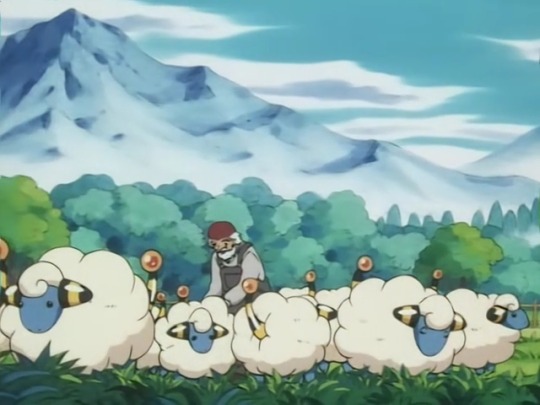
First and foremost, if we take into account my last post surrounding certification, our first influencing factor on Pokemon ownership would be the limit imposed on the number that can be owned depending on trainer level. Someone who just wants to have Pokemon as pets and not to battle or enter contests would be limited to two, and the maximum party limit would be granted to professionals. What I failed to mention last time was that for breeders or farmers, these restrictions would not be exact. “Stock” would not be counted as in the party of any one person, and so those Pokemon would not count towards their Pokemon limit. I imagine that breeders, farmers, and the like would have to receive a license separate from battling to raise such a large number of Pokemon.
Next, anyone looking to adopt, catch, or own Pokemon would have to look at their financial situations. Pokemon are individualistic in their needs, from most grass types only needing the same care as a houseplant, to Snorlax requiring a vast amount of food each day. Even among grass-types and other “easy to care for” Pokemon, their needs could change depending on the environment. For example, as opposed to how some plants may just not grow and go dormant during winter, grass-type Pokemon don’t stop existing. In colder environments, such Pokemon would probably require sun lamps, humidifiers, or other tools to keep healthy. Similarly, keeping an ice-type Pokemon in hot, arid climates would be incredibly expensive as those Pokemon would probably require high levels of air conditioning or even refrigeration. So, not only would interested trainers have to concern themselves with independent factors like feeding, but they’d also have to consider their living situations. I, as someone who lives in a state and town with numerous lakes and streams, would be better suited to keep fish-like Pokemon than those who are completely landlocked and without freshwater sources.
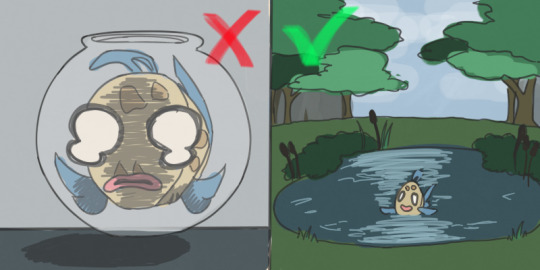
Another resource to consider would be space. Pokemon range from as small as four inches tall to quite literally as large as a whale. One’s living situation would greatly impact how many Pokemon they could keep. Although Pokemon can be stored in Pokeballs, I imagine it would not only be frowned upon to keep them constantly contained, but also dangerous for that Pokemon to go so long without exercise. In terms of having enough space, someone living in the cities in an apartment would probably be limited to less or smaller Pokemon than someone living out in the country with wide-open spaces. What should also be considered is the number of Pokemon that the entire household could support. For large families living in the suburbs, they would probably impose house rules on how many Pokemon each person is allowed, or that the whole house is allowed. Living alone would grant someone the unique privilege of being able to allot the rest of their home to their Pokemon. Not only would having enough space for Pokemon to be out of their balls be important, but also the surrounding area for exercise. For highly active Pokemon, such as some fighting-types or flying-types, it may be necessary to have a “roaming area” for them to explore, as opposed to “house Pokemon” like Skitty or Lillipup.
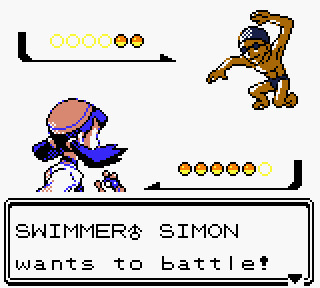
The topic of exercise leads me to my next area for consideration: trainer’s personal lifestyle. Similarly to how real pet owners need to be ready to accommodate their pets, so should trainers. A person who hates physical exercise, loathes leaving the house, and who is generally more introverted should probably refrain from Pokemon of high energy that require lots of physical activity, such as running Pokemon like Doduo. Trainers may then gravitate towards Pokemon that do match their lifestyles, such as their careers, hobbies, or interests. We see this in the games with swimmers loving their water-type Pokemon and fighting-type experts training alongside their teams. The selected Pokemon should match one’s personal style.
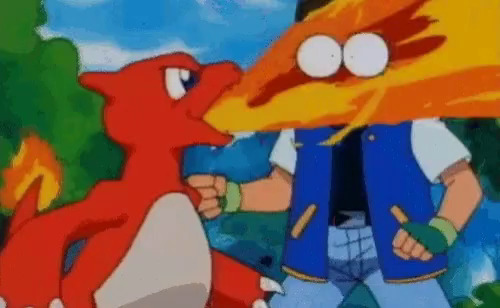
Next, personal type-preferences would have to be considered by the individual. Although danger levels vary even within typings, some types, such as fire or ghost, would be guaranteed to come with their own difficulties and dangers to consider. Normal-type pokemon don’t generally come with the threat of burning one’s house down. If a trainer is not yet ready to handle a type of Pokemon, whether because they are too young, not experienced enough, not equipped with the resources, or simply because they may be afraid of that type of Pokemon, they should keep that in mind when they choose.
The shortest factor on Pokemon selection to consider would be that of the role one would want their Pokemon to play, whether its as a pet, companion, teammate, or help around the house or in their career or hobby. This wouldn’t be so much a barrier as it would be a way to choose what Pokemon would best suit that person. Even then, most Pokemon are capable of filling any role with the right care, love, and training.
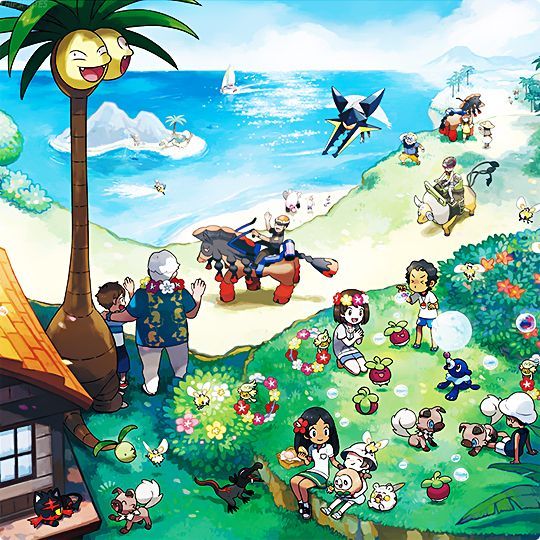
Our final influencing factor would be environment and access. What Pokemon someone could have would be directly dependent on what they could have had the opportunity to encounter, purchase, trade for, or borrow. The types of biomes any one person inhabits or has inhabited influences that person’s selection pool of Pokemon, and the ability to travel would expand those selections. I’ll be saving my thoughts on Pokemon biomes, environments, and locations for a later post so I can then dissect it with more care. And with that, we come to the conclusion of the influencing factors on Pokemon ownership.
37 notes
·
View notes